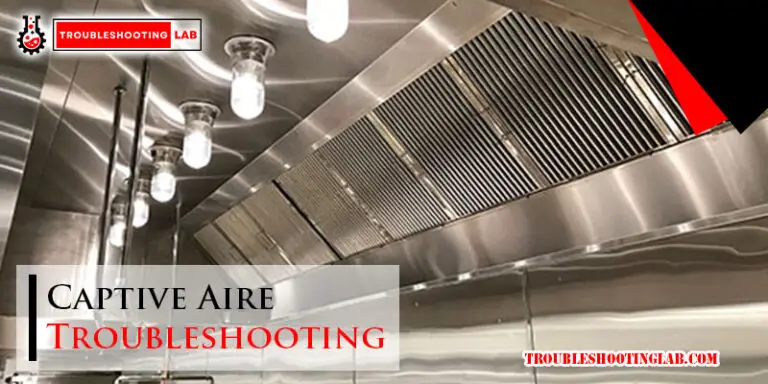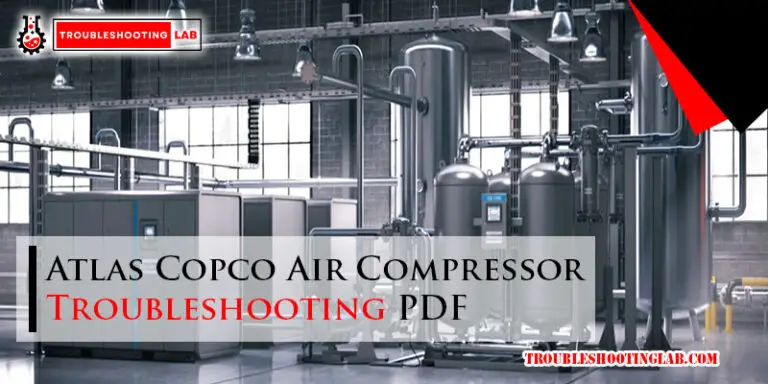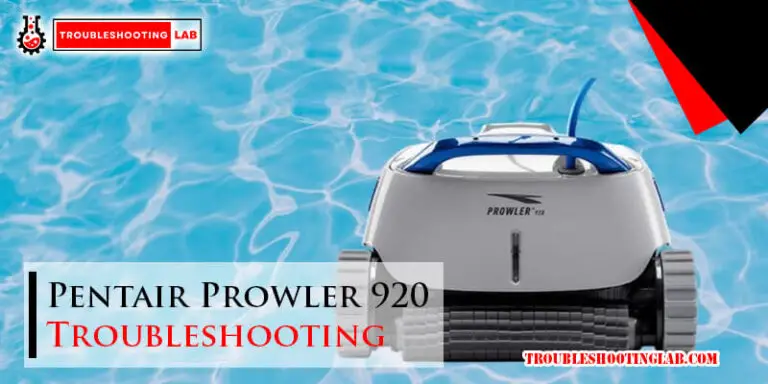Fujitsu Mini Split Troubleshooting: Quick Fixes
If your Fujitsu mini split is not working, possible causes could be a tripped circuit breaker, blown fuse, unplugged condenser unit, clogged air filter or drain line, failing motor, or a refrigerant leak. The green light flashing on your Fujitsu mini split may indicate a safety device activating due to the intake filter being removed during operation.
Some troubleshooting tips for a Fujitsu mini split that is not cooling include checking thermostat settings, inspecting the air filter for blockage, and checking for refrigerant leaks. To reset your Fujitsu mini split, refer to the manufacturer’s instructions or consult a professional.
If you are experiencing issues with your Fujitsu mini split system, it is recommended to seek professional help from an HVAC technician.
Understanding And Resolving Problems With Your Fujitsu Mini Split
Welcome to our comprehensive guide to understanding and resolving problems with your Fujitsu Mini Split. Having issues with your mini-split can be frustrating, but fear not! In this blog post, we will cover common issues and quick fixes for your Fujitsu Mini Split.
Introduction To Fujitsu Mini Split Troubleshooting
Before we dive into the common issues, it’s essential to understand the basics of Fujitsu Mini Split troubleshooting. These systems are incredibly efficient and reliable, but sometimes they may encounter problems that require some troubleshooting. By familiarizing yourself with the common issues and quick fixes, you can save time and money by resolving the problem on your own.
Common Issues And Quick Fixes
Let’s now take a look at some of the most common issues you may encounter with your Fujitsu Mini Split and the quick fixes for each problem:
- Not cooling: If your Fujitsu Mini Split is not cooling, there could be a few reasons for this. First, make sure the thermostat settings are correct. If they are, check if the air filter is clogged and clean, or replace it if necessary. Another possible cause could be a refrigerant leak, which would require professional assistance to fix.
- Lights flashing: If you notice that the lights on your indoor unit are flashing, it could indicate a communication error. In this case, try resetting your mini split by turning off the power and then turning it back on after a few minutes. If the issue persists, you may need to contact a professional technician for further assistance.
- No heat: When your Fujitsu Mini Split isn’t producing heat, check if the thermostat settings are correct. If they are, make sure the air filter is clean and not obstructed. Additionally, check if the outdoor unit is free from debris or ice. If you still experience no heat, it’s advisable to seek professional help.
- Lights flashing: If the green light on your Fujitsu Mini Split is flashing, it may indicate a safety device activation due to the removal of the intake filter during operation. To resolve this issue, ensure the intake filter is properly installed and operational.
- Codes: Sometimes, your Fujitsu Mini Split may display error codes. These codes can indicate various issues, such as a malfunctioning motor, a refrigerant leak, or temperature control problems. Consult your user manual for specific error code meanings and suggested solutions.
Remember, the solutions provided here are general guidelines, and it’s always recommended to refer to your user manual or consult a professional technician for accurate troubleshooting, repairs, and maintenance. By addressing these common issues promptly, you can ensure your Fujitsu Mini Split continues to provide optimal comfort and performance.
Possible Causes And Solutions For A Non-Cooking Fujitsu Mini Split
If you find that your Fujitsu Mini Split is not cooling effectively, there could be several possible causes. By identifying the issue and taking appropriate troubleshooting steps, you can get your mini split up and running efficiently again. Here are some common causes and solutions for a non-cooling Fujitsu mini-split:
Tripped Circuit Breaker Or Blown Fuse
If your mini split is not cooling, check if the circuit breaker for the unit has tripped or if a fuse has blown. A tripped circuit breaker or blown fuse can disrupt the power supply to the unit, causing it not to cool properly. To resolve this issue, locate the circuit breaker panel and reset the circuit breaker, or replace the blown fuse as needed.
Unplugged Condenser Unit
Another possible cause of a non-cooling Fujitsu mini split is an unplugged condenser unit. The condenser unit plays a crucial role in cooling the air, so if it is not connected properly, the unit will not cool effectively. Check if the condenser unit is securely plugged in and ensure that the power supply is not interrupted or loose.
Clogged Air Filter Or Drain Line
A clogged air filter or drain line can also hinder the cooling performance of your Fujitsu Mini Split. Over time, dust, dirt, and debris can accumulate in the air filter and drain line, blocking the airflow and causing the unit to struggle to cool the air. Regularly inspect and clean the air filter and drain line to remove any obstructions and ensure proper airflow.
Failing Motor
If the fan motor or compressor motor in your mini-split is failing, it can lead to inadequate cooling capacity. Signs of a failing motor include unusual noises, weak airflow, or the unit not turning on at all. In this case, it is recommended to contact a professional technician to diagnose and repair the motor.
Refrigerant Leak
A refrigerant leak can significantly impact the cooling ability of a Fujitsu mini split. If there is insufficient refrigerant in the system, the unit will struggle to cool the air effectively. Signs of a refrigerant leak include reduced cooling performance, ice formation on the evaporator coil, or hissing sounds near the refrigerant lines. If you suspect a refrigerant leak, it is crucial to contact a qualified HVAC technician to locate and repair the leak and recharge the refrigerant as needed.
By addressing these possible causes and following the corresponding solutions, you can increase the chances of resolving the non-cooling issue with your Fujitsu mini split. If the problem persists, it is recommended to seek professional assistance to ensure proper diagnosis and repair.
Decode And Fix Error Codes On Your Fujitsu Mini Split
If you are experiencing issues with your Fujitsu Mini Split, such as it not cooling or displaying error codes, it can be quite frustrating. However, understanding and decoding these error codes can help you troubleshoot and fix the problem quickly.
Understanding Common Error Codes
When your Fujitsu mini split encounters an issue, it will display an error code on the indoor unit’s display panel. Each error code corresponds to a specific problem within the system. Here are some common error codes you may come across:
| Error Code | Description |
|---|---|
| E0 | Communication error between the indoor and outdoor units. |
| E1 | High-pressure protection mode is activated due to insufficient ventilation or a faulty outdoor fan motor. |
| E2 | Indoor unit pipe temperature sensor error. |
| E3 | Outdoor unit pressure sensor error. |
It’s important to note that these error codes may vary depending on the specific model of your Fujitsu Mini Split. Refer to the user manual or contact a professional technician for the correct error codes relevant to your system.
Troubleshooting Steps For Specific Error Codes
Once you have identified the error code displayed on your Fujitsu Mini Split, you can follow these troubleshooting steps to resolve the issue:
- E0 Communication Error: Check the wiring connections between the indoor and outdoor units. Make sure they are secure and properly connected. If the issue persists, it may indicate a faulty control board, and professional assistance may be required.
- E1: High Pressure: Ensure that the outdoor unit is adequately ventilated. Remove any obstructions impeding the airflow and clean the outdoor unit’s condenser coils. If the error code persists, it could indicate a faulty outdoor fan motor, which may require professional repair.
- E2 Pipe Temperature Sensor Error: Inspect the temperature sensor attached to the indoor unit’s pipe. Check for any loose connections or damage. If needed, replace the sensor following the manufacturer’s instructions.
- E3 Pressure Sensor Error: Check the pressure sensor on the outdoor unit for any damage or loose connections. If necessary, replace the sensor according to the manufacturer’s guidelines.
If the error code persists after following these troubleshooting steps, it is recommended to contact a certified technician or an authorized Fujitsu service center for further assistance. They will have the expertise to diagnose and fix the issue with your Fujitsu Mini Split.
Identifying And Fixing No Heat Issues With Your Fujitsu Mini Split
If you’re experiencing no heat issues with your Fujitsu Mini Split, there are a few troubleshooting steps you can take to identify and fix the problem. By following these steps, you can potentially resolve the issue on your own without having to call for professional assistance.
Check the thermostat settings.
The first step is to check the thermostat settings on your Fujitsu Mini Split. Make sure that the thermostat is set to the desired temperature and mode (usually heat mode). It’s important to ensure that the thermostat is properly programmed to enable heating functionality.
Inspect And Clean Air Filter
The air filter plays a crucial role in the performance of your Fujitsu Mini Split. Over time, the filter can become clogged with dust and debris, restricting airflow and hindering heat distribution. Inspect the air filter and clean or replace it if necessary. A clean air filter will help ensure efficient heating operations.
Ensure Proper Power Supply
Check the power supply to your Fujitsu mini split unit. Ensure that the power is turned on and that the unit is receiving electricity. It’s also a good idea to check if the circuit breaker has tripped or if a fuse has blown. In the event of a tripped circuit breaker or blown fuse, reset the breaker or replace the fuse promptly.
Examine Heat Exchanger And Flame sensors.
The heat exchanger and flame sensor are critical components responsible for heat production in your Fujitsu Mini Split. Over time, these parts can become dirty or malfunction, resulting in no heat issues. Carefully inspect the heat exchanger and flame sensor, and clean or replace them as needed. This step should be performed by a qualified technician to ensure safety and proper functionality.
By following these troubleshooting steps, you can potentially identify and fix any heat issues with your Fujitsu Mini Split. However, if the problem persists or if you’re uncomfortable performing these steps yourself, it’s always best to contact a professional HVAC technician for assistance.
A Comprehensive Guide To Using The Fujitsu Mini Split Manual
Overview Of The Fujitsu Mini Split Manual
The Fujitsu Mini Split Manual is a valuable resource for troubleshooting and understanding your Fujitsu Mini Split system. It provides detailed information on the operation, maintenance, and troubleshooting of your unit, ensuring that you have the knowledge to keep your system running smoothly. Whether you are a homeowner or a professional HVAC technician, this guide will help you navigate through various sections and find solutions to common issues.
Navigating The Sections And Troubleshooting Information
When it comes to navigating the Fujitsu Mini Split Manual, it is important to familiarize yourself with the various sections and where to find troubleshooting information. The manual typically includes sections such as:
- Introduction and System Overview
- Installation instructions
- Operation and control
- Maintenance and cleaning
- Troubleshooting and error codes
Each section contains detailed information about specific aspects of your mini-split system. When troubleshooting, it is essential to refer to the troubleshooting section, as it provides step-by-step instructions for resolving common problems.
Troubleshooting Specific Problems With The Help Of The Manual
When you encounter a specific problem with your Fujitsu mini split system, the manual can be your go-to resource for troubleshooting. By referring to the troubleshooting section, you can follow a systematic approach to identify and resolve the issue.
Here are the steps to troubleshoot a specific problem using the Fujitsu Mini Split Manual:
- Identify the problem. Determine what exactly is not functioning as expected. Is the unit not cooling? Is the fan not running?
- Refer to the troubleshooting section: Locate the relevant troubleshooting information in the manual.
- Follow the step-by-step instructions: The manual will provide instructions on how to diagnose and resolve the issue. It may include flowcharts, tables, or diagrams to help you understand the process.
- Check for error codes: If your mini-split system displays an error code, the manual will have a section dedicated to decoding the codes and providing recommended actions.
- If the issue persists: If you are unable to resolve the problem using the manual, it is recommended to contact a professional HVAC technician for further assistance.
By following these steps and utilizing the troubleshooting information in the Fujitsu Mini Split Manual, you can often resolve common problems without the need for professional intervention.
Frequently Asked Questions
Why Is My Fujitsu Mini Split not working?
There are several reasons why your Fujitsu mini-split may not be working. Some possible causes include a tripped circuit breaker, a blown fuse, an unplugged condenser unit, a clogged air filter or drain line, a failing motor, or a refrigerant leak. Make sure to check these areas for any issues.
Why Is The Green Light Flashing On My Fujitsu Mini-Split?
The green light on your Fujitsu mini-split is flashing because the intake filter has been removed during operation. This triggers a safety device that stops the operation of the plasma filter unit. After some time has passed, the air-clean indicator lamp will flash.
Ensure proper ventilation, and avoid removing the intake filter while the unit is running.
Why Is My Fujitsu Halcyon Mini-Split Not Cooling?
If your Fujitsu Halcyon mini-split is not cooling, it could be due to the wrong thermostat settings, a clogged air filter, or a refrigerant leak. Check the thermostat settings, clean or replace the air filter, and if the problem continues, contact a professional for a refrigerant leak inspection.
How Do I Reset My Fujitsu Mini Split?
To reset your Fujitsu mini-split, follow these steps: 1. Turn off the unit using the remote control or the main power switch. 2. Wait for at least 5 minutes to allow the system to fully power down. 3. Turn on the unit by pressing the power button or switching on the main power.
4. The mini-split should now be reset and ready to use. Make sure to refer to the user manual for specific instructions related to your model.
Why Is My Fujitsu Mini Split Not Working?
Possible reasons include a tripped circuit breaker, blown fuse, unplugged condenser unit, clogged air filter or drain line, failing motor, or a refrigerant leak.
Conclusion
If your Fujitsu mini split is not working, there could be several reasons behind it. A tripped circuit breaker, a blown fuse, an unplugged condenser unit, a clogged air filter or drain line, a failing motor, or a refrigerant leak may be causing the issue.
Additionally, if the green light on your Fujitsu Mini Split is flashing, it could be an indication of a problem with the plasma filter unit. Make sure to troubleshoot these issues to ensure your mini-split is functioning properly and efficiently.






